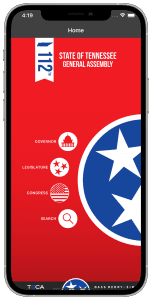As we venture carefully into 2021, we’re hoping to turn the corner and have a smoother, safer and more satisfying year. So far, we haven’t exactly made that turn, but things are looking up. When so much around us is uncertain, we look for a constant — something on which we can depend. One thing that hasn’t changed — even if our office lobbies are closed and we’re operating a little differently — is our commitment to you and your community.
I’m borrowing the following words from my late friend Justin LeBerge, who worked for the National Rural Electric Cooperative Association and left us far too early. He makes the point far better than I:
Concern for community is one of the seven core principles that guide our actions all year long.
The most powerful way electric co-ops show concern for community is through the essential services they deliver every day. The employees and leaders of your co-op have a vested interest in doing what’s best for the community because they are members of the same community.
In addition to their day-to-day efforts to keep the lights on, electric co-ops support the community through routine actions like promoting energy efficiency, helping members understand their energy use and educating the public about electrical safety.
The not-for-profit business model also helps co-ops show concern for community by keeping more money in the local economy. Rather than being returned to Wall Street investors, any profit the co-op makes is reinvested in the cooperative, used to pay down debts, saved for emergencies or returned to members over time.
These basic differences in the cooperative way of doing business are important, but they’re just the beginning of the story. Here are a few of the many ways electric co-ops show concern for community and set themselves apart from ordinary utilities:
Operation Round Up
Through Operation Round Up, members at participating co-ops can elect to have their monthly bills rounded up to the next whole dollar amount. Those extra pennies are pooled and used to support community organizations in areas served by the co-op.
Electric Cooperative Youth Tour
To prosper and sustain themselves, strong communities need strong citizens. Nowhere is this truer than in tight-knit rural communities. As community-based organizations, electric co-ops do their part to groom our next generation of leaders through the Youth Tour program. Each year, outstanding high school students represent electric co-ops from across the country and converge on Washington, D.C., for a weeklong program that teaches the values of citizenship, democracy, leadership and cooperation. (We look forward to again sending students to Washington when the pandemic is over. — David)
Energy research
Caring for the community means doing our best to be good stewards of our environment and natural resources while ensuring energy remains reliable and affordable. Through its membership in the National Rural Electric Cooperative Association, your local electric co-op is actively involved in the development of new energy technologies and monitoring the advances of other researchers.
It might surprise you to know that America’s electric cooperatives are often leaders in the implementation of new energy technologies. For example, some of the top solar utilities in the United States are electric co-ops. The low-density rural areas served by co-ops often stand to gain the most from advances in technology and efficiency.




